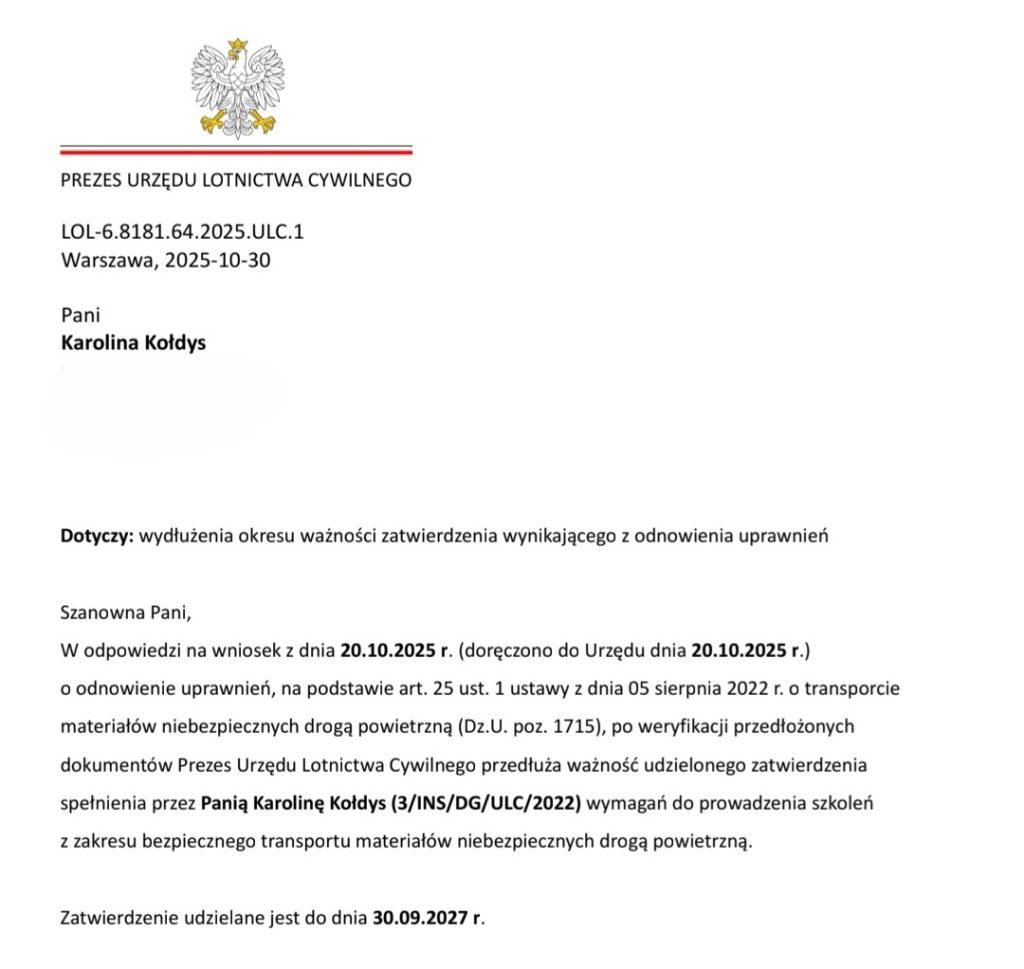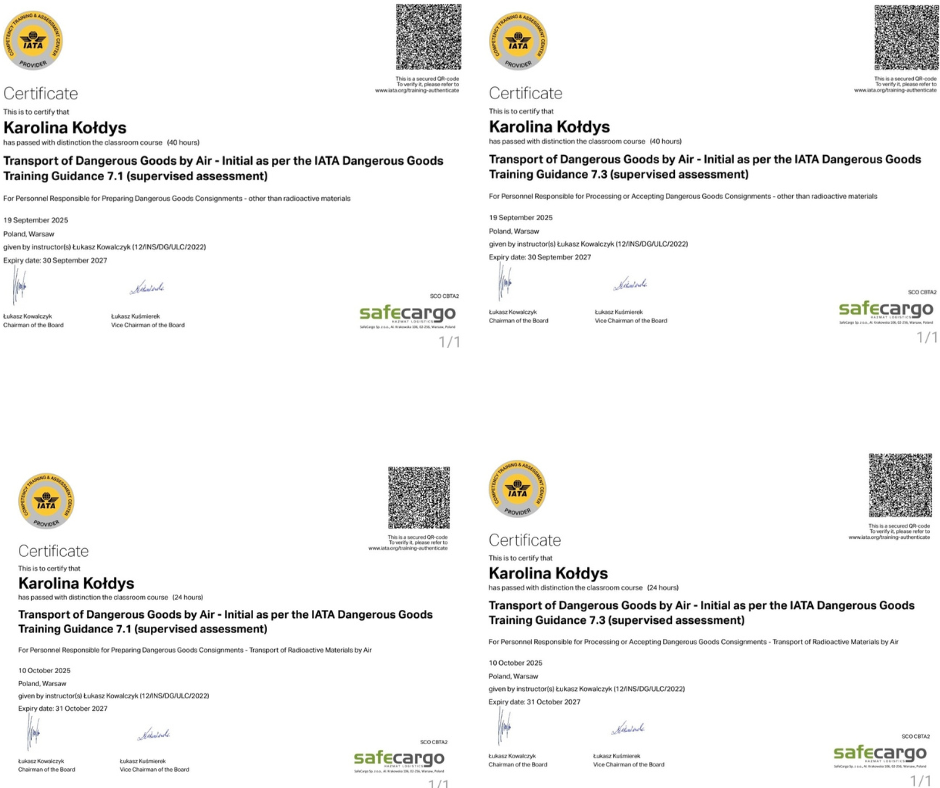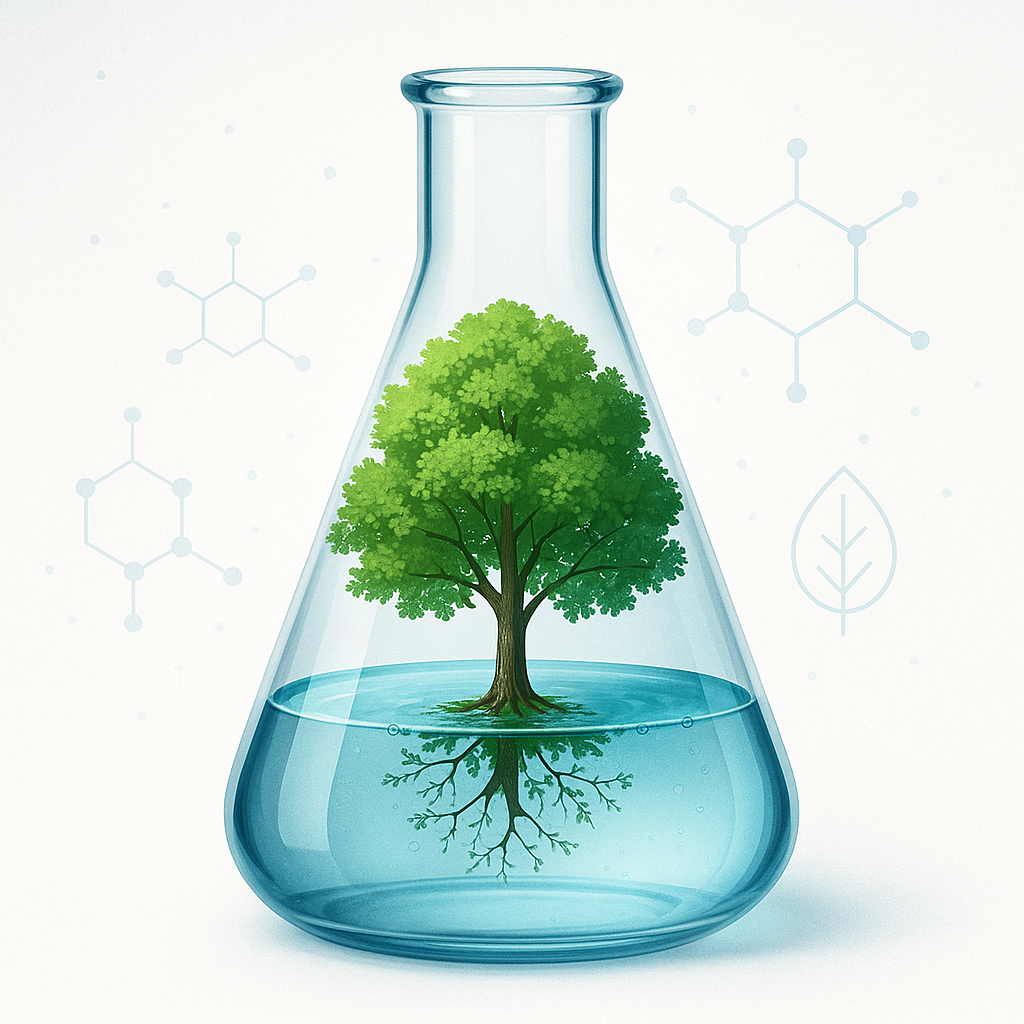How to prepare effectively for the DGSA examination: strategy, practice and the advisor’s mindset
Over the past several years, I’ve had the privilege of training more than 220 DGSA candidates and working with nearly a hundred professionals who sought additional support after attending courses at other training centres, either in preparation for the exam or during the recertification process. Many of them needed not just a knowledge refresh, but above all, a structured approach and a practical understanding of the regulations. This perspective built on hundreds of hours of training, error analysis, and conversations with candidates and certified advisors, allows me to clearly identify what truly determines success in the DGSA examination, and what most often becomes its biggest barrier.
The DGSA (Dangerous Goods Safety Advisor) examination is not merely a test of one’s knowledge of the ADR, RID or ADN regulations. It is, above all, an assessment of analytical competence, comprehension, the ability to apply legal provisions in practice, and logical reasoning under time pressure. According to the Regulation of the Polish Minister of Infrastructure and Development of 7 May 2015 (Journal of Laws, item 718, as amended), the exam consists of two multiple-choice tests (general and specialised) and a written assignment simulating a real transport scenario.
Most candidates, both new and recertifying, describe the exam as demanding: to pass, one must achieve at least 80% correct answers in both test parts and the written task (for new advisors) or 80% in the tests alone (for recertifying advisors). This threshold requires not only knowledge of the law, but also the ability to navigate and apply it contextually.
So, how can one prepare effectively?
Here is a concise set of my key recommendations, based on practice, teaching experience, and the psychology of adult learning.
- Consistency over intensity
One of the most common mistakes among DGSA candidates is last-minute learning. The legal frameworks governing the transport of dangerous goods span thousands of pages and require familiarity, not rote memorisation. Based on years of experience in adult education, I can confidently say that effective learning comes from short, regular study cycles rather than long, intensive sessions once or twice a week. Adults learn better when new knowledge connects naturally to their professional experience and when they see its relevance in practice.
In practical terms, this means:
- working 4–6 days per week on 40–80 test questions and one practical assignment (alternating between tests and tasks),
- recording problematic areas and revisiting them after 24–48 hours, once the mind has distance and readiness to correct mistakes,
- analysing not only correct answers but also the reasoning behind errors – they reveal true gaps in understanding.
- linking exercises to real-world contexts: work cases, operational events, or even everyday observations.
2. Strategic approach to test practice
The goal of test practice is not to memorise answers but to train analytical precision and interpretation under realistic exam conditions. Each test should be treated as a simulation, not just a knowledge check.
I recommend a two-stage approach:
Stage 1 – Work with the official question catalogue (Ministry of Infrastructure):
- solve thematic blocks mirroring the structure of the actual exam: general test – 30 questions, specialist test – 20 questions,
- set reduced time limits to increase efficiency and mental discipline: general part: 40–50 minutes (exam: 80 minutes), specialist part: 30–40 minutes (exam: 60 minutes).
This approach reflects the fact that questions in the catalogue are grouped thematically and often relate to one regulation, allowing for faster recall.
Stage 2 – Work with randomised mock tests:
- simulate full exam conditions: general test: 50–65 minutes, specialist test: 40–50 minutes.
Leave a small time buffer — real exam stress always affects pace and focus.
It’s also worth remembering that the official question bank is continuously expanded but not published openly. Therefore, adaptability and the ability to interpret new or rephrased questions are critical. This strategy builds not only knowledge retention but also cognitive resilience and automatic reasoning, essential both during the exam and in professional advisory work.
3. Working with ADR/RID/ADN – know how to use, interpret and recall key provisions
ADR and its complementary regulations (RID, ADN too) form the professional language of every DGSA. Knowing where to find information is important, but insufficient.
Certain elements must be well-remembered to avoid wasting precious time searching through the text during the exam. Under pressure, even well-prepared candidates can experience cognitive overload. Having a strong foundation and familiarity with key structures enables you to think logically, stay calm, and remain efficient.
This doesn’t mean you must memorise entire sections of the law. Rather, systematic repetition and active reading naturally reinforce the most relevant provisions. By consciously focusing on high-impact areas while solving tests or case studies, you create long-term memory anchors, without mechanical memorisation. This approach reduces the risk of mistakes and builds confidence – a vital asset during the exam.
4. The written task – a real-world simulation
The written task is often the greatest challenge for candidates. It tests not memory, but the ability to apply knowledge in context – from classification and packaging, through marking and documentation, to final compliance assessment. In my courses, I recommend the “until perfect” method: select one task, solve it independently from start to finish, then compare it with the model solution and repeat, focusing on weak areas, until you achieve full consistency. This eliminates habitual mistakes, strengthens logical reasoning, and builds procedural fluency.
Experience shows that candidates who practise with structured, instructor-verified tasks consistently achieve top scores in this part of the exam. Learning by doing through case simulations and problem-solving remains the most effective method for adults, as it integrates experience, memory, and analytical thinking.
5. Managing yourself in the learning process
The DGSA exam demands not only knowledge but mental endurance and disciplined focus. Even the best study plan fails if the learning environment isn’t optimised. To support effective study, ensure that you:
- maintain an ergonomic, distraction-free workspace (note: some individuals benefit from light background stimuli to sustain focus),
- organise your study plan into thematic blocks to maintain structure,
- use focused study intervals with short, active breaks – they help sustain attention and prevent cognitive fatigue.
Adults learn most efficiently when they see clear purpose and relevance. Therefore, connect your DGSA preparation to real professional contexts, analyse actual transport scenarios or safety cases.
Learning then becomes a natural process, not a forced routine.
Preparing for the DGSA examination is a process of discipline, reflection, and integration of knowledge across multiple domains — chemistry, logistics, transport law, risk management, and safety science.
As in every aspect of safety, haste is the greatest enemy, and consistency the strongest ally.
Remember:
The exam ends in the examination room, but real preparation begins in how you think about safety.
For more insights, practical strategies and individual mentoring, I invite you to explore my DGSA courses and advisory programmes, where theory meets reality, and learning transforms into professional confidence.





